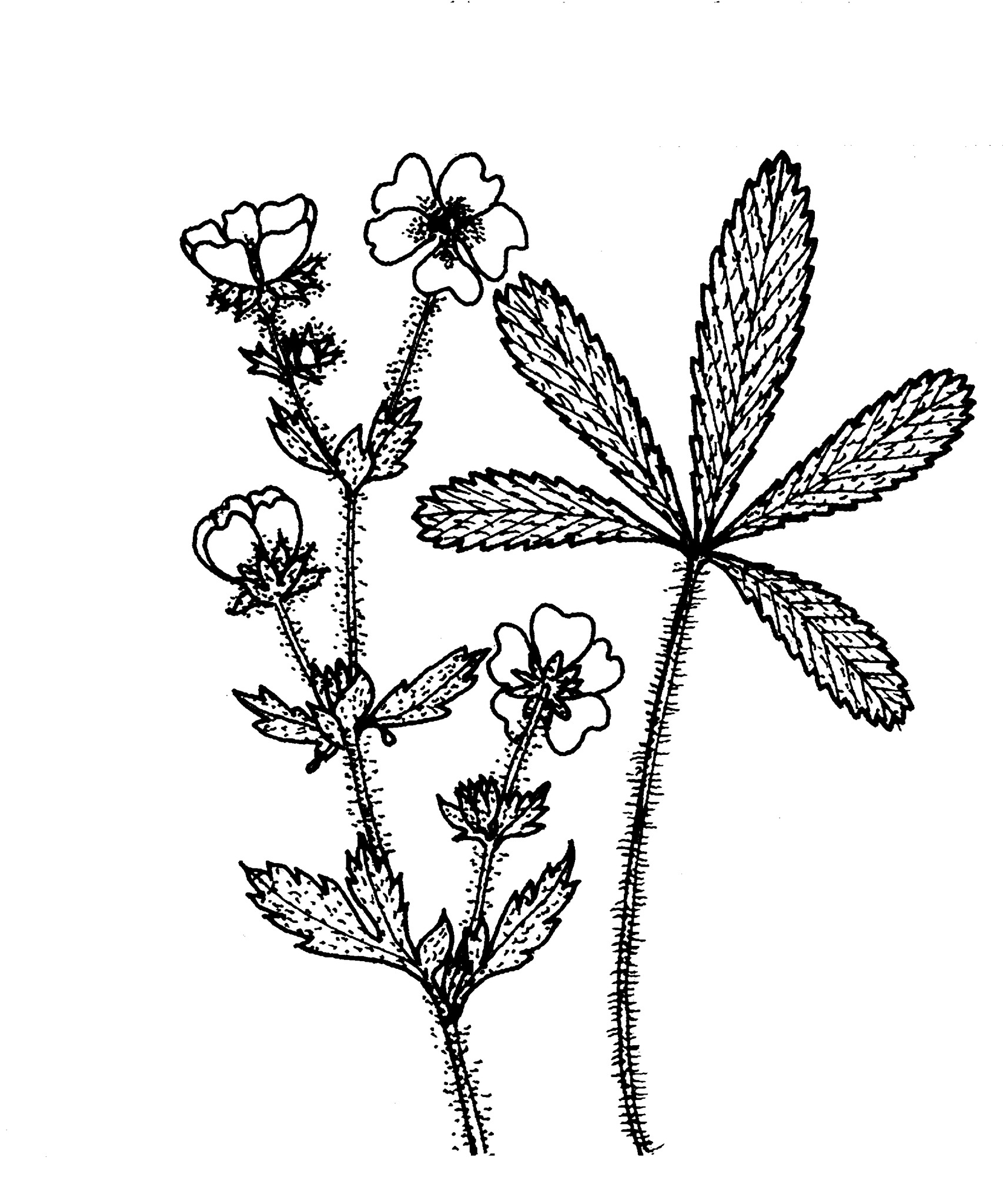
Latin potens — powerful, referring to the alleged medicinal properties.
Perennial or occasionally annual or biennial herbs and a few shrubs. Leaves pinnate, palmate or of 3 leaflets; stipules present. Epicalyx present. Flowers solitary or in terminal or axillary clusters. Sepals and petals mostly 5 (4, 6 or double in some cultivars), the sepals alternating with the epicalyx segments. Stamens 10-30. Carpels generally numerous. Fruit usually an elongated head of achenes.
Grown mostly for the attractive foliage and flowers (some have silvery leaves and others vibrantly coloured flowers) as border and rock garden plants in cool-climate gardens. The range of species and cultivars available varies from year to year. Care is needed in their cultivation as several species have become naturalised.
Less frequently grown species include the following (although there are many others available in specialist nurseries): P. alba L., C and E Europe, is a spreading plant with white flowers; P. aurea L. from S and C Europe has golden flowers with darker centres; P. crantzii (Crantz) Fritsch,Alpine Cinquefoil, from Europe has flowers yellow with an orange centre; P. neumanniana Reichenb. from N,Wand C Europe is a mat-forming plant generally grown as the dwarf cultivar 'Nana', which has stems to about 6 cm long, leaves bright green and flowers gold Syn. P. tabernaemontani Aschers.; and P. ×tonguei Baxt. is a garden hybrid with yellow flowers that are red at the base.
A number of species are grown for their silver- or white-hairy foliage: P. anserina L., Silverweed, is a stoloniferous plant with silvery hairs below which has become naturalised in NSW, Vic and Tas; P. argentea L., Hoary Cinquefoil, is mat-forming and has leaves that are white-hairy below; P. cinerea Villars has distinctive grey-hairy foliage; P. eriocarpa Lehm. is a mat-forming plant with yellow flowers; and P. gracilis J.D. Hook. has leaves that have a few silky hairs above and are densely hairy below.
About 500 temperate to arctic species of the northern hemisphere.
Perennial herbs by seed, cultivars by cuttings or division, woody species by seed or cuttings.
Several species have medicinal properties or edible fruits. The rhizome of P. erecta (L.) Räuschel, Tormentil, has been used medicinally.
Flowers similar to those of Ranunculus but distinguished by the presence of an epicalyx, the segments of which alternate with the sepals.
The wide and variable range of species and cultivars available in this genus precludes an effective key.
Source: (2002). Rosaceae. In: . Horticultural Flora of South-eastern Australia. Volume 3. Flowering plants. Dicotyledons. Part 2. The identification of garden and cultivated plants. University of New South Wales Press.
